
In my last post, I described my trip over the White Pass. However, there are other ways to get from Skagway, Alaska, to Whitehorse, Yukon, Canada.
White Pass & Yukon Route Railroad
Updated June 2022

Take the train from Skagway to the Yukon or vice versa.
The White Pass & Yukon Route Railroad operates a train service between Skagway, Alaska and Carcross, Yukon Territory, but the train does not run during the winter. Therefore, driving is the only option if you want to see White Pass during winter. See my post about driving from Skagway to Yukon over the White Pass mid-winter. (click the travel menu).
Starting in May, the train goes from Skagway to Carcross in the Yukon with a stop at beautiful Lake Bennett, in British Columbia. From Carcross, you can get a bus to Whitehorse. Or you can start in Carcross and go to Skakway. You can also go from Carcross as far as the Alaska border and back by bus.
Click the first photo to enlarge and then scroll through the others.
The Town of Bennett, British Columbia, Canada
While at Bennett, the trip includes a great lunch in the restored 1903 Train Station. Bennett was a busy town with a population varying between 10,000 and 30,000 during the Klondike Gold Rush. Prospectors going to the Klondike to search for gold started in Skagway and hiked over the mountains to Bennett Lake. From there, they built rafts and went across the lake and down the Yukon River to Dawson City.
The first train arrived in Bennett in 1899 and was completed to Carcross, Yukon, by 1900. Prospectors no longer needed to hike over the mountains or stop at Bennett. The town was soon abandoned.
All that is left of the town now is the church, one house, and the train station. The trip costs $124, one-way, including lunch and is well worth it. This train ride is called one of the most scenic in the world. Indeed, it was stunningly beautiful. If is it a nice day, you can see the reflection of the mountains in the lake. The 1950’s vintage diesel locomotives pull the train. Passenger cars date from the 1800s. They still have two steam engines which they operate on special occasions. Pot-belly stoves heat the passenger cars, but no heat is needed in the summer.
On the day I was there, the lunch consisted of a big bowl of homemade stew, bread, salad, and apple pie. It was delicious. The only problem is a shortage of time to eat and look around. The train stops there for one hour and 15 minutes.
St Andrews Church
St Andrew’s Presbyterian Church is the only original structure left in the town of Bennett. It was built in 1899. The train station was not built during the gold rush. It was built in 1903.
The town of Bennet is no longer a town. New growth has replaced the trees that the prospectors cut down in the 1800s. Today, it looks more like a forest than a town. The streets are now just walking trails. The better of the hotels were moved to Carcross, and the other buildings were left to decay and fall after more than 100 years. The only thing left is the big church. St. Andrews Presbyterian Church, built in 1899, was one of the most significant buildings in Bennett. It has seen better days, but it is still standing and beautiful in the way of old buildings. Unfortunately, you cannot go inside. The church and the town had a busy and exciting but short life. The town was abandoned in 1902.
Bennett Lake
Photos of Bennett Lake. Click to enlarge.
Views of beautiful Lake Bennett
Some History
The building of the WP&YR railway began in 1898. When they built the railroad, they went around some mountains and blasted through others. There are two long tunnels and a bridge that was the biggest in the world at the time. The building of this railroad was a fantastic engineering feat. Now it is an International Historic Civil Engineering Landmark, a designation shared with the Panama Canal, the Eiffel Tower and the Statue of Liberty.
The problem was, by the time the railroad reached the town of Bennett in 1900, the gold rush was almost over and the flood of new prospectors was reduced to a trickle.
Despite the gold rush being over, the railway flourished. It was the only route from the coast to cities in the Yukon other than walking. There were no roads. After building the Alaska Highway during the Second World War, the railway’s profits began a long slow decline, and it went out of operation in 1982.
In 1988, it began operations again. This time for the thousands of tourists that were flocking to Alaska from the lower states
The Chilkoot Trail
The Chilkoot Trail is how the gold miners got to the Yukon during the gold rush in the 1800s. First, they came up the coast by ship from the United States to Skagway, Alaska. From there, they hiked over the Chilkoot Pass to the town of Bennett on the shore of beautiful Lake Bennett. Here they built rafts to cross the lake. They then made their way to Whitehorse and from there by paddle-wheel steamship to Dawson. From there, they walked again to the gold fields in the Klondike to stake their claim.
The Chilkoot Trail is still maintained, and you can hike it over the Coast Mountains to Bennett. From Bennett, you can take the train the rest of the way. Allow at least four days for the hike from Skagway to Bennett. The town of Bennett is located in British Columbia. There is a small amount of B.C. territory between Alaska and the Yukon.
Canoe Lake Bennett
Yet another option is to bring a friend and a canoe on the train. From Bennett, you can cross the lake, following the exact route the gold miners took. You will need someone to meet you at Carcross, Yukon, with a vehicle to pick up the canoe.
Camping at Bennett
There is a primitive campground at Bennett. No services. Bring your camping gear on the train and stay for a day or two.
Update 2022
The train did not run during the Covid pandemic. Service is scheduled to start again in 2023 but with several differences as follows:
- The price is now $245. Expensive, but so is everything else these days. Still worth it.
- The stop in Bennett is now only 45 minutes.
- Lunch at the train station is no longer included. Instead, you will be given a box lunch after the stop at Bennett.
Remember that this trip crosses an international border between the United States and Canada. So don’t forget your passport.
Everything is subject to change. For the latest information and prices, click here:
White pass and Yukon Route (WPYR)
Click on “History” on the same website for the railroad history.
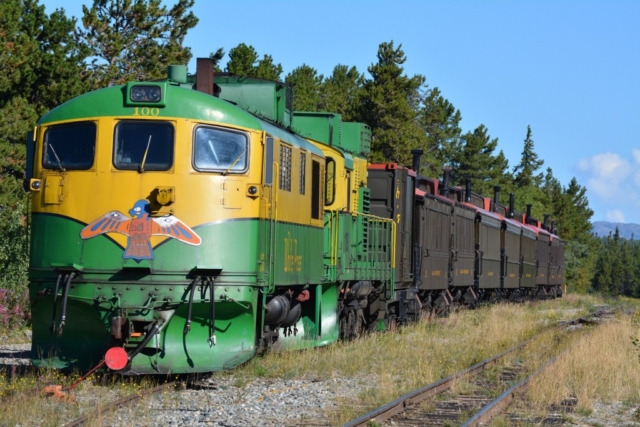
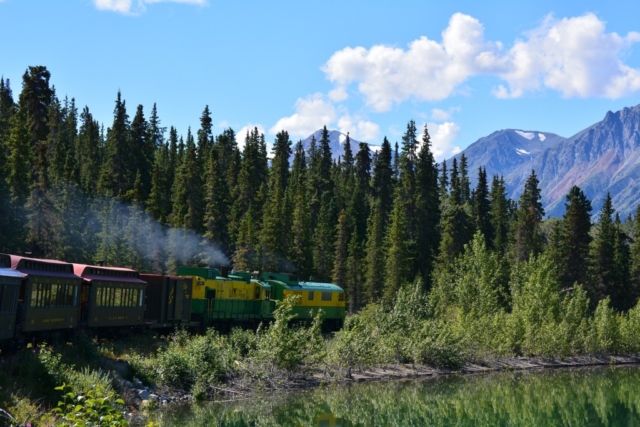
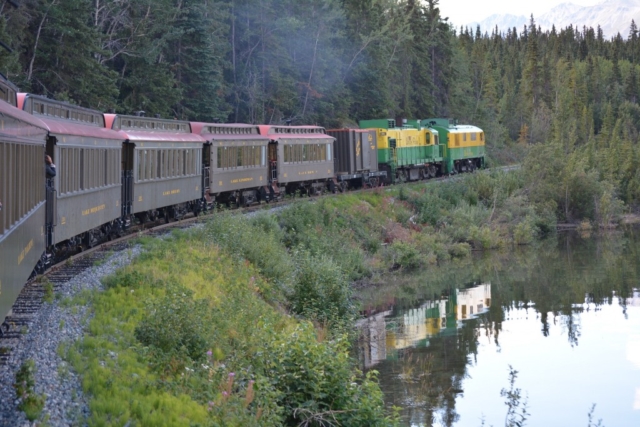

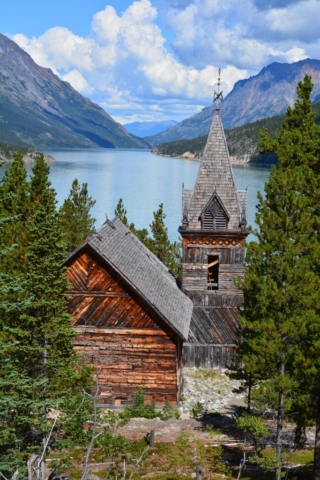

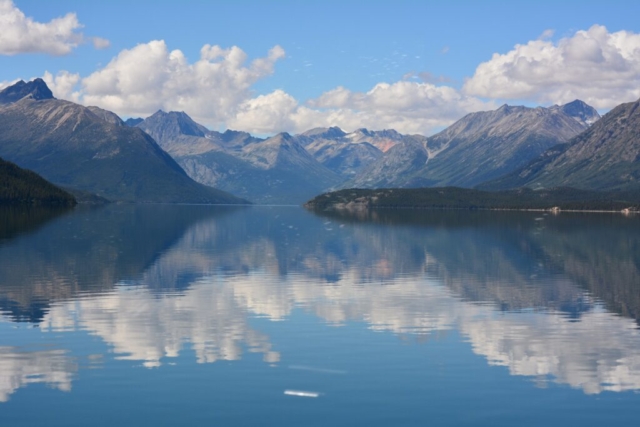

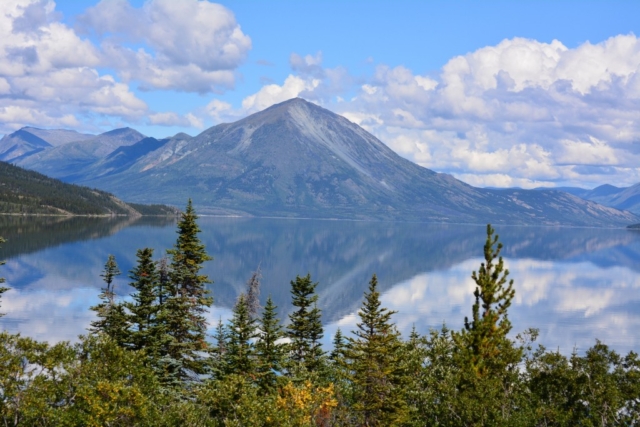


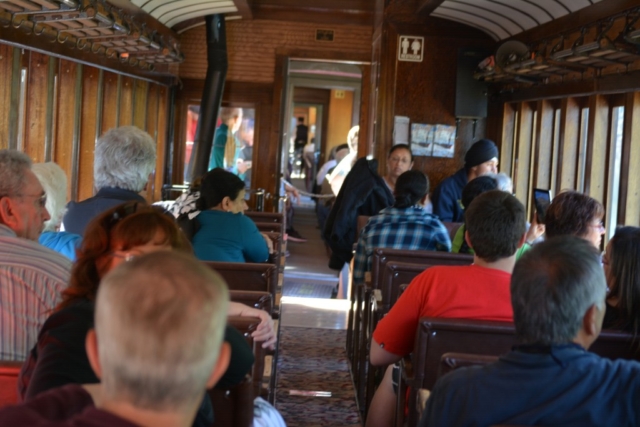
Hi Uncle Tom. Enjoyed reading about your trip thru Yukon and Alaska. We really enjoyed the pictures of the mountains. We can hardly wait to experience some of what you saw while in Alaska the scenery is breathtaking.
Thanks Pennie. Lots more photos and stories to come.